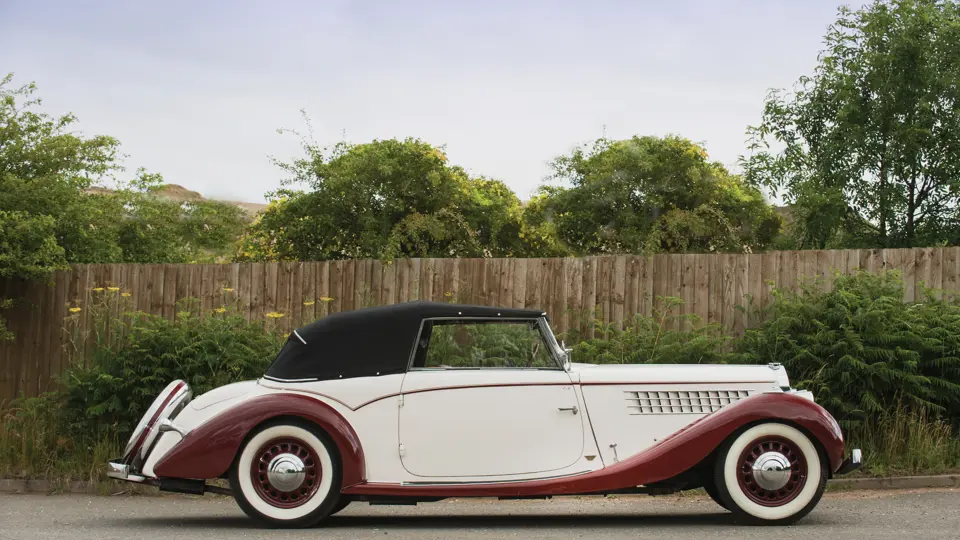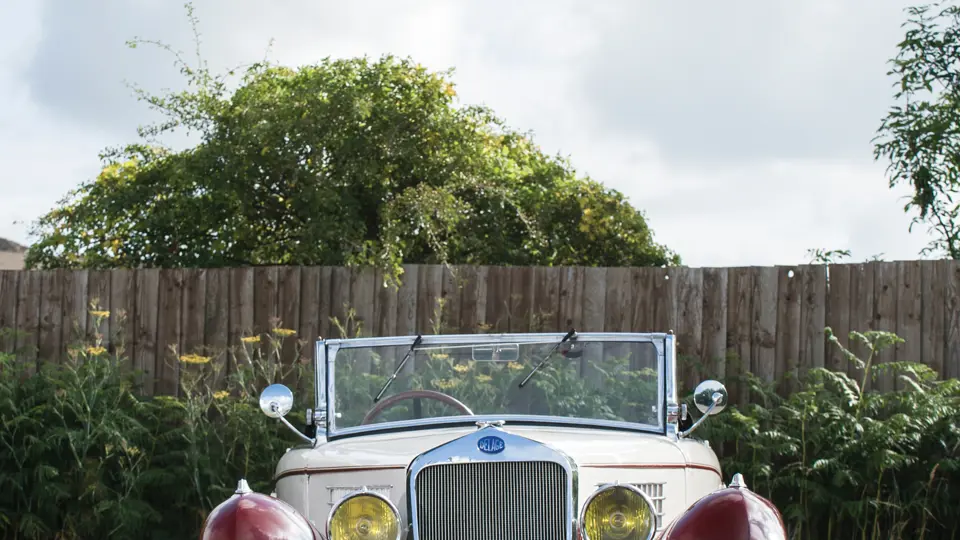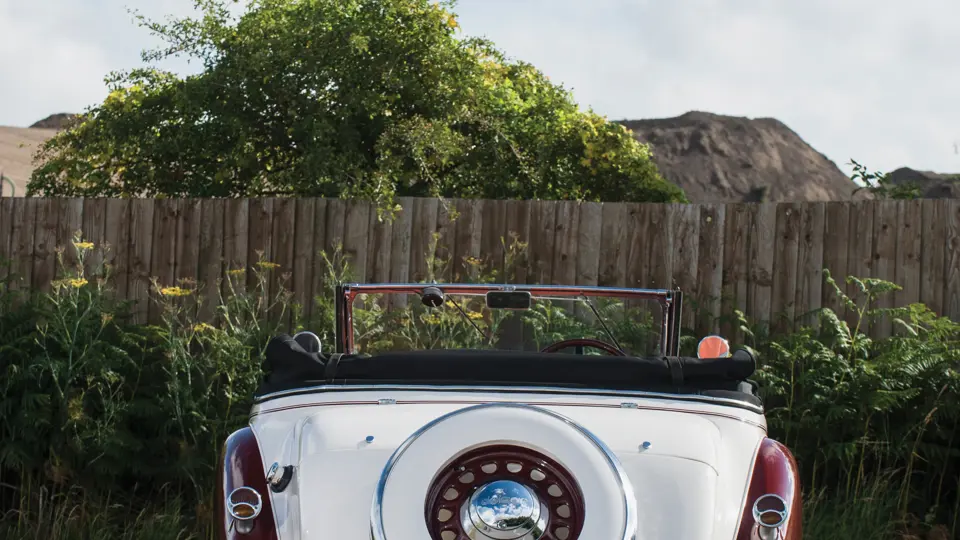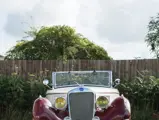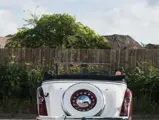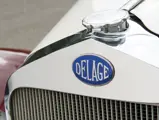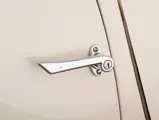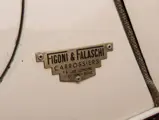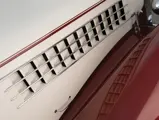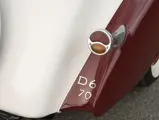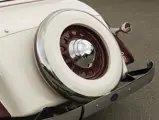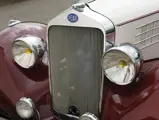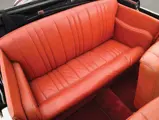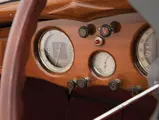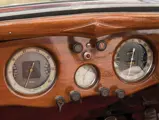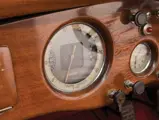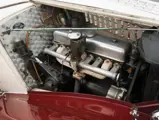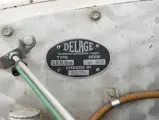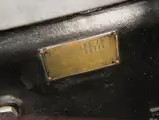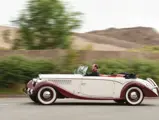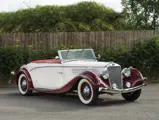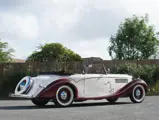90 bhp, 2,729 cc inline six-cylinder engine with an inverted Solex carburettor, four-speed Cotal electromagnetic transmission, independent front suspension, live rear axle with transverse leaf springs in the front and rear, and four-wheel hydraulic drum brakes. Wheelbase: 3,150 mm
After Delahaye merged with Delage in 1935, both Louis Delage and his technical office remained largely autonomous. Using the Delahaye bank of parts, they modified and precisely prepared the forthcoming new model, the D6-70. Louis Delage used the Delahaye 135 engine and modified it by decreasing it to 2,729 cubic centimetres. In doing so, the engine gained a shorter stroke, which, combined with a modified head, gave the new engine a lot more vivacity in comparison to its sister Delahaye 135.
Then, Delage and talented engineer Arthur Michelat chose the Type 134 chassis, which was much lighter than that from the 135, although it was just as stiff. Michelat further prepared this frame so that it could be fitted with Houdaille shock absorbers in place of the quite outdated friction shocks. Also of much interest was the fact that only the Delage was fitted with modern hydraulic Bendix brakes; the Delahaye range would retain the aged mechanical system until the outbreak of World War II.
Lastly, most of the D6-70s were equipped with the optional Cotal electromagnetic gearbox, which was an almost automatic transmission system that had four speeds plus reverse. The Cotal system, with its silky-smooth operation, was a huge improvement over any other concurrent design. The resulting D6-70 was listed in the Delage brochure as a sport model, as was the higher-level D8-120, and it is widely recognised as the best car built by Delage in the late 1930s.
CHASSIS NUMBER 50714
Chassis number 50714 was bodied by renowned Parisian coachbuilders Figoni et Falaschi as their elegant Cabriolet Mylord, with “Mylord” referring to the convertible hood that could be set in one of three positions. These three positions consisted of fully raised, fully lowered, or midway, which sheltered the rear-seat passengers and would have been used with a liveried chauffeur at the wheel. This design, as sketched by Figoni, features their classic, sensuously curved wings and balanced lines, with the profile set off by delicate two-toning along the flanks.
The car was registered for the first time on 24 August 1936 and was later restored in its present colour combination: a rich off-white and burgundy, with polished aluminium wheels shod in whitewall tyres and delicate chrome accents throughout. Overall, the car displays a warm patina of care rather than age and shows gentle use. Its body shows no signs of corrosion, and the fabric and paint throughout are in good condition. In recent history, the car has taken part in the Paris-Deauville Rally, which is organised by the Club de l’Auto, and several concours d’elegance events, winning awards at such locales as Aix les Bains and Aix en Provence, amongst others. Interestingly, it has even had a minor role as a film star, appearing in the 1988 French film Itinéraire d'un enfant gâté, alongside Jean-Paul Belmondo.
This sumptuously elegant and dramatic Delage is equally suitable on the road as it is on the silver screen!




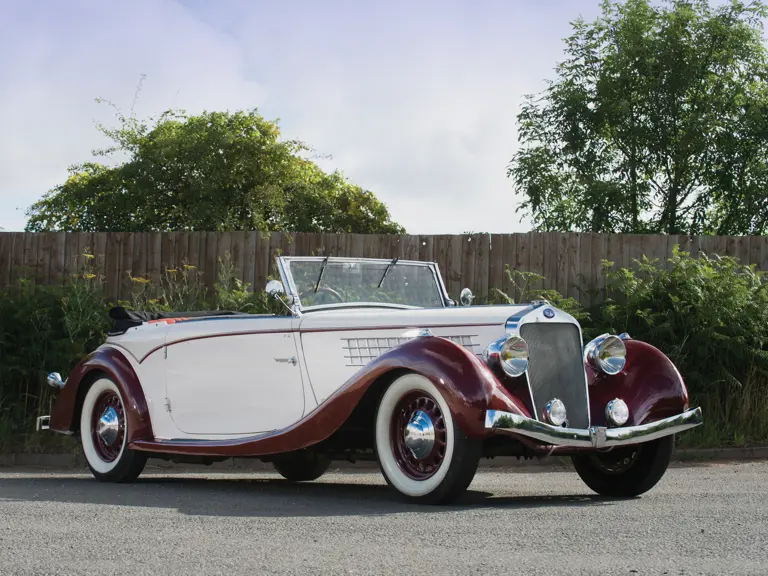
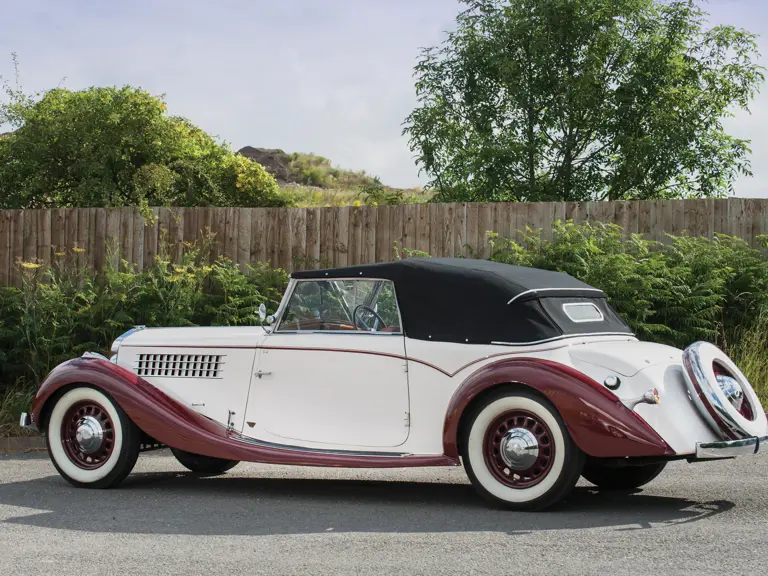
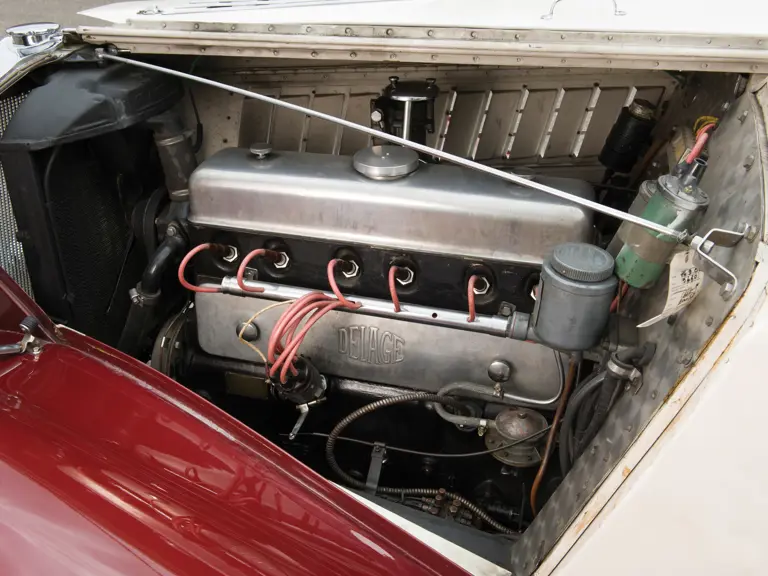
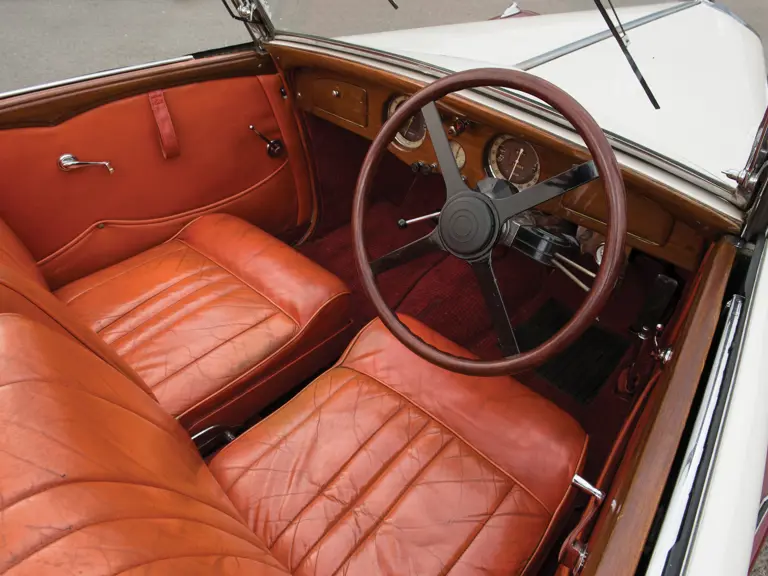

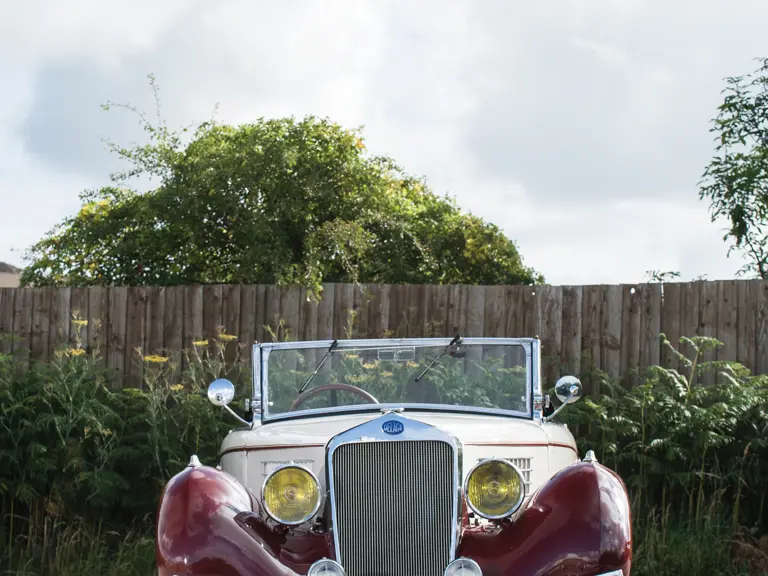

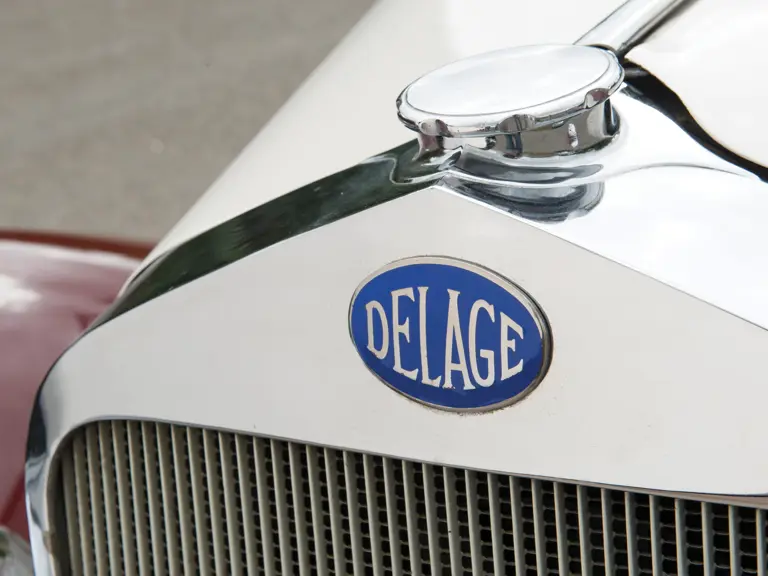
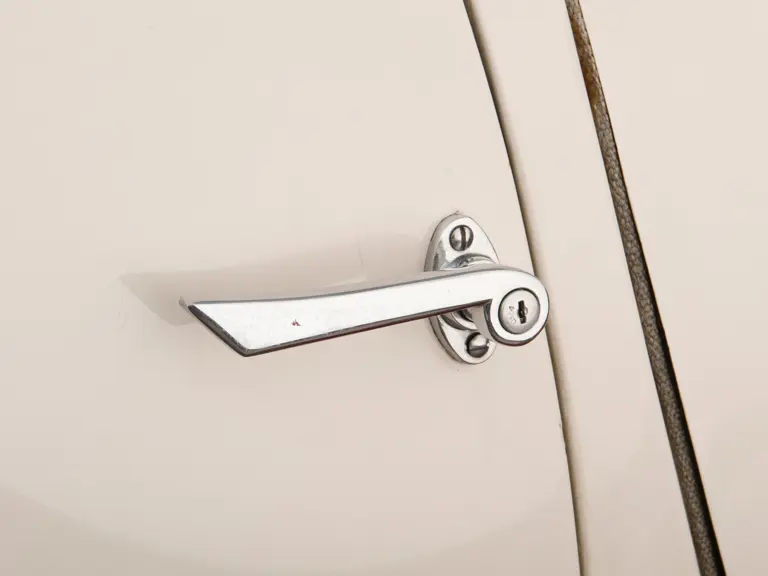
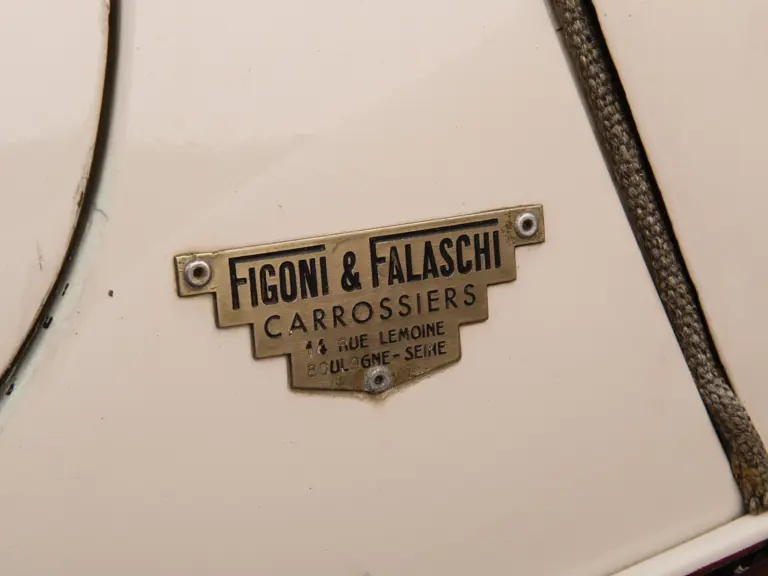
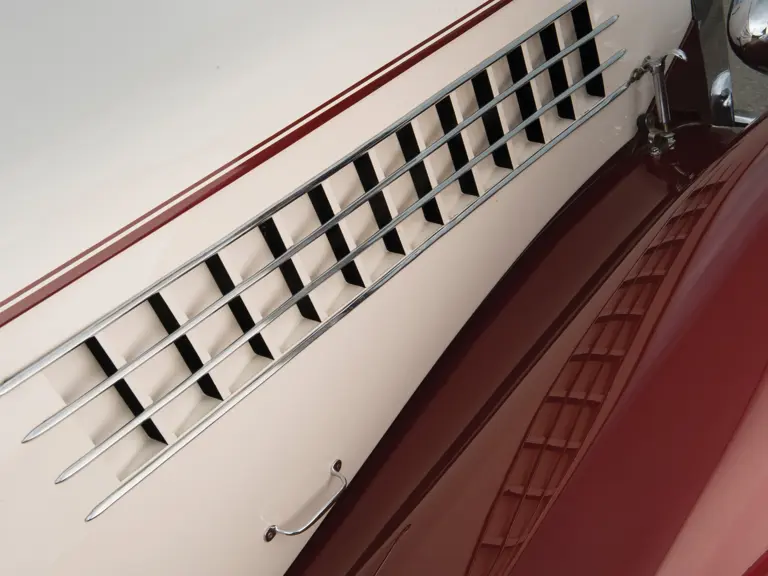

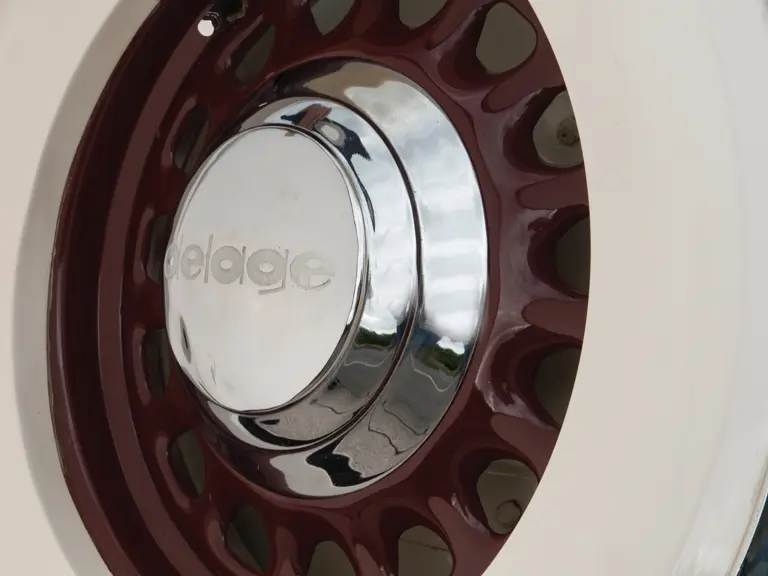
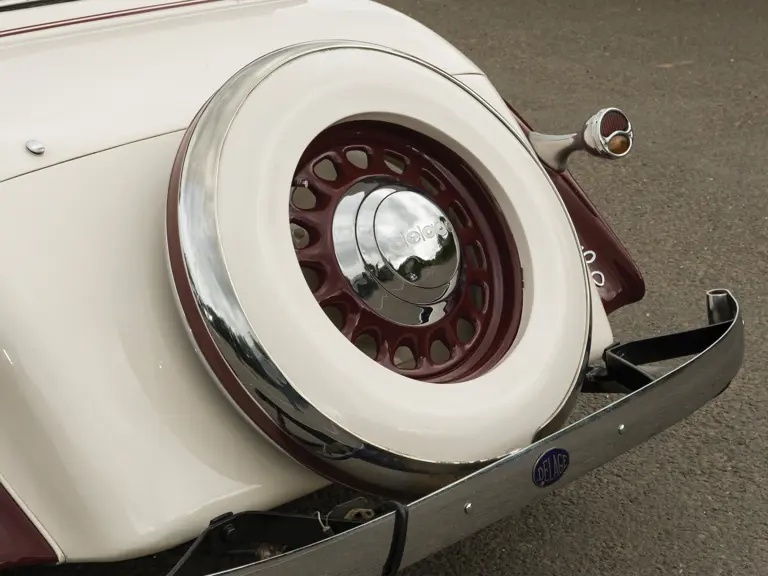
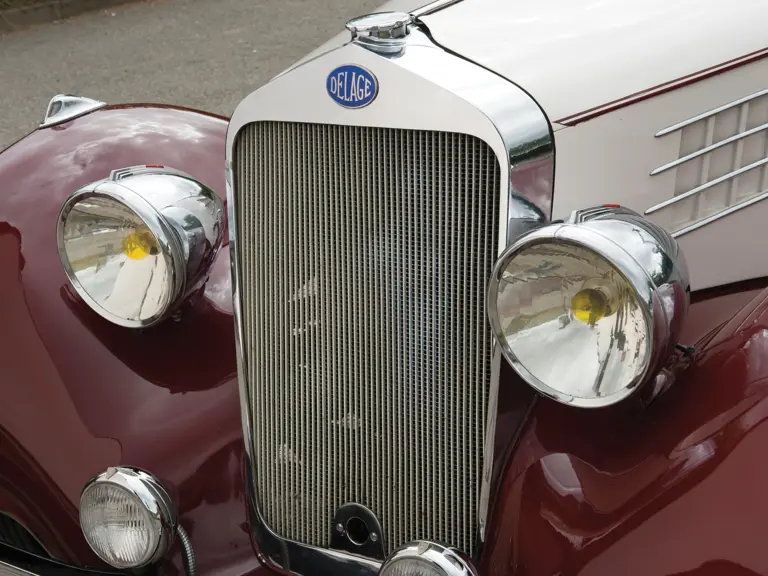

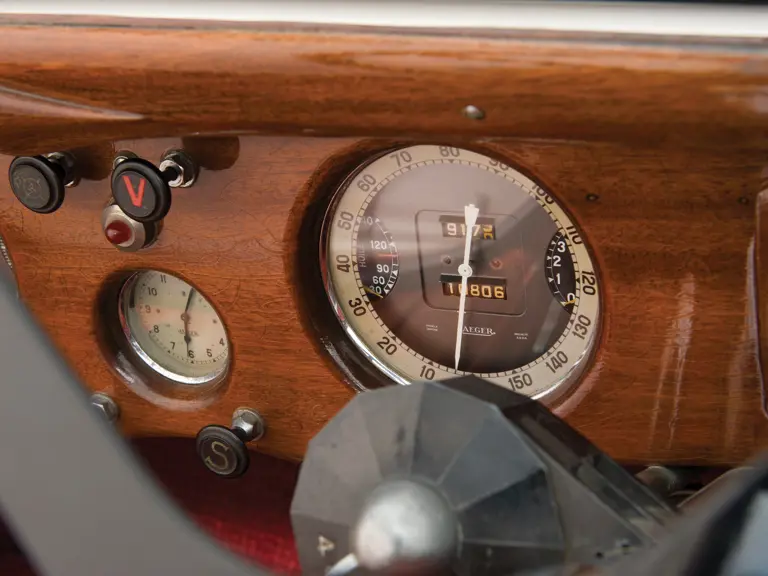
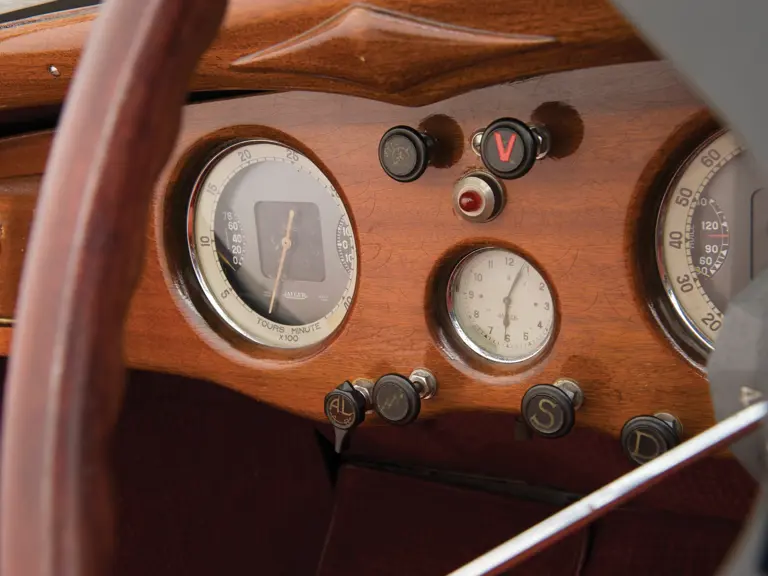
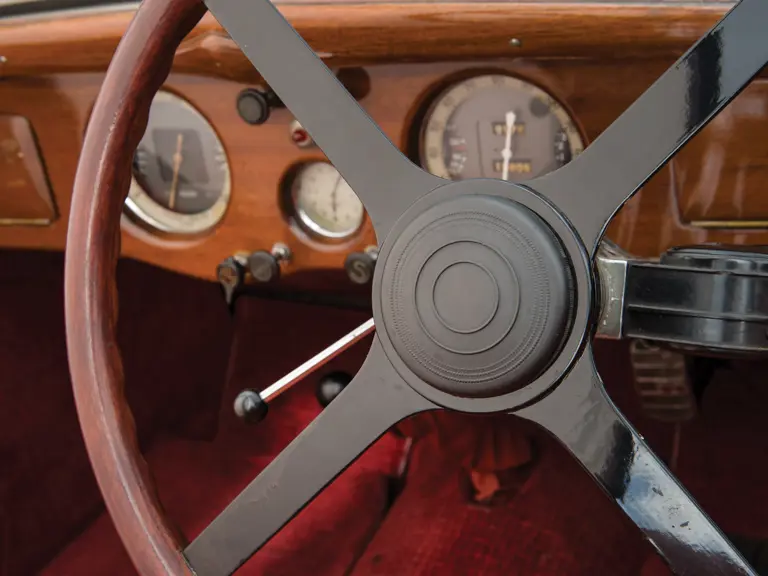
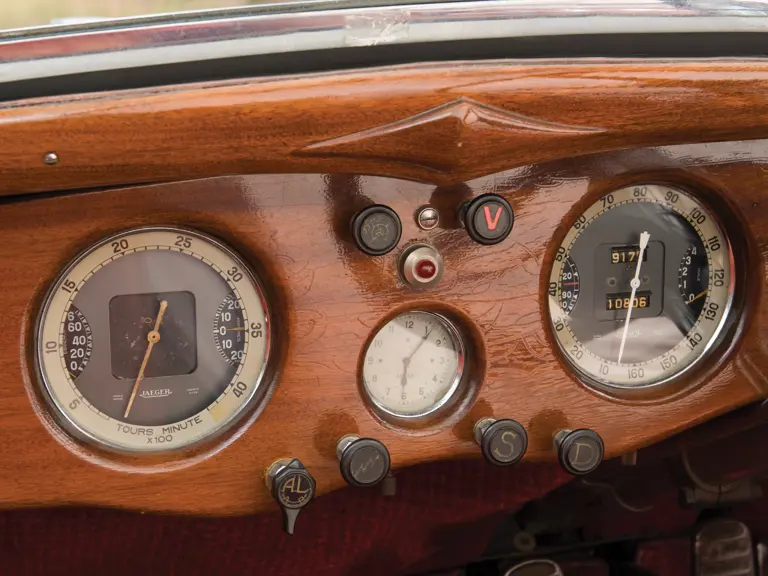
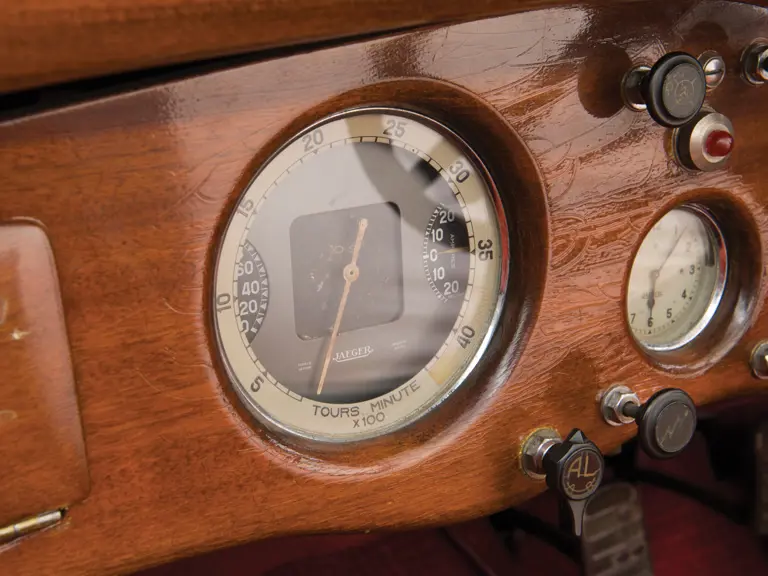
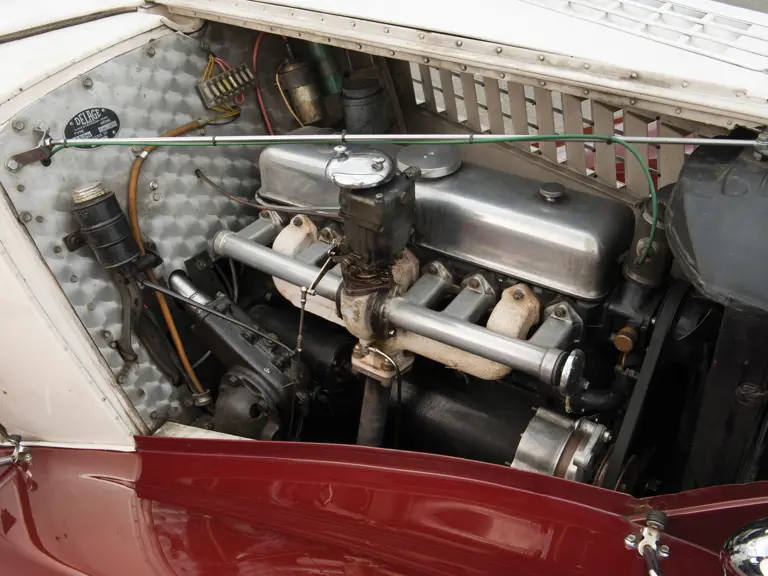
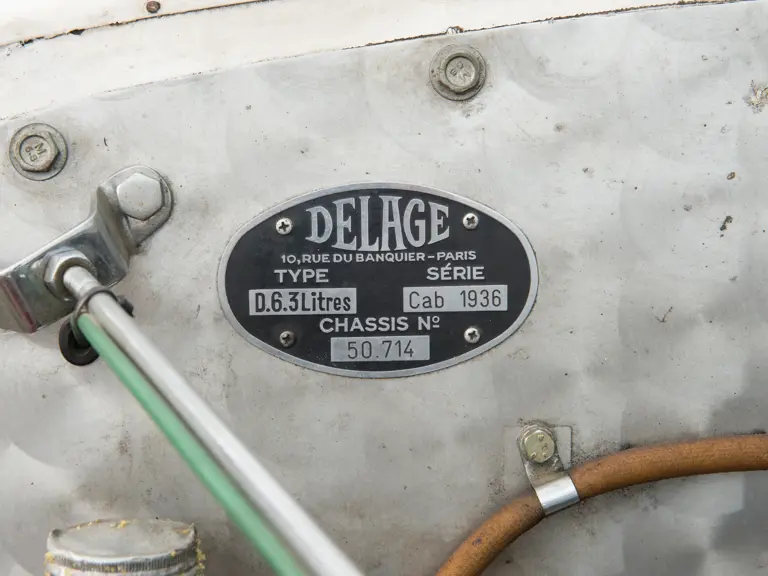
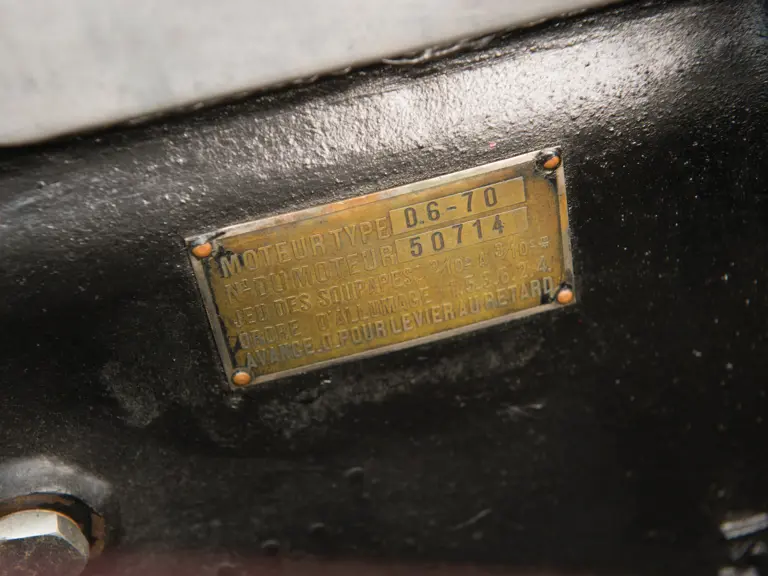
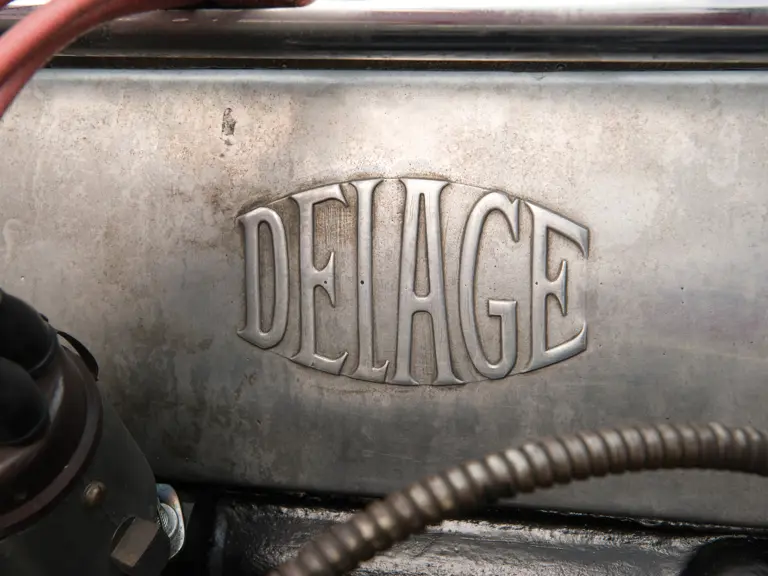
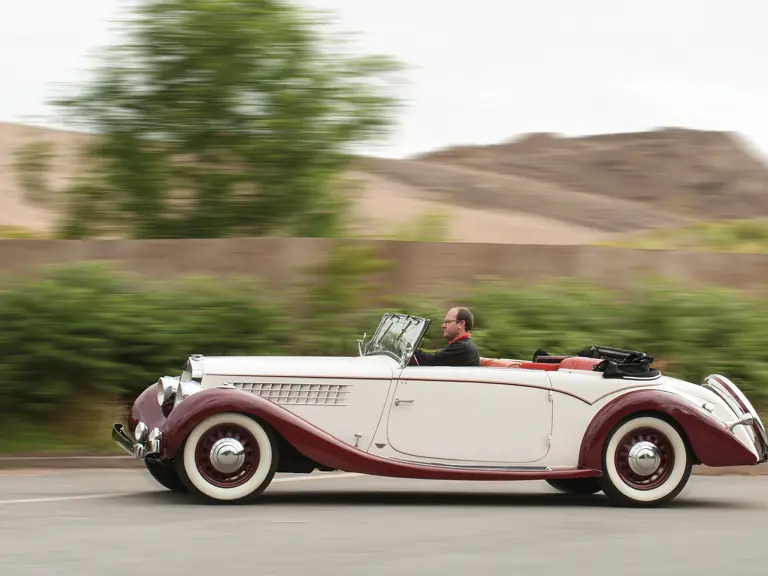
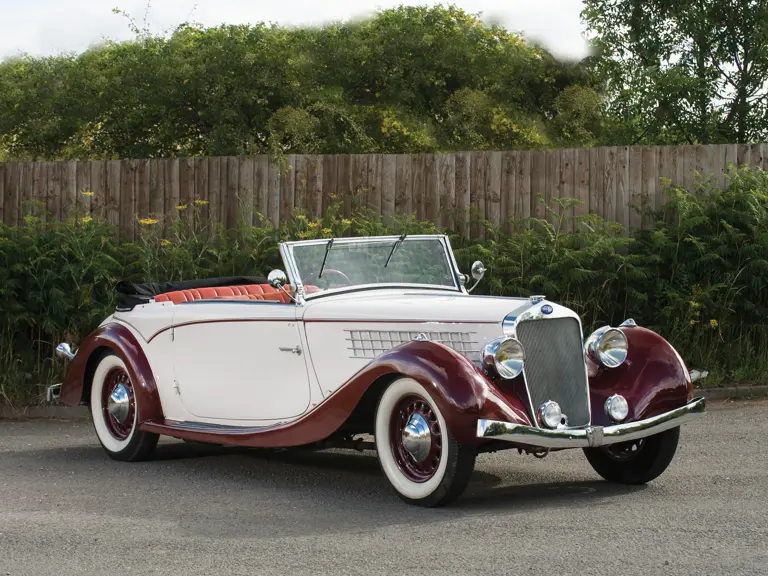

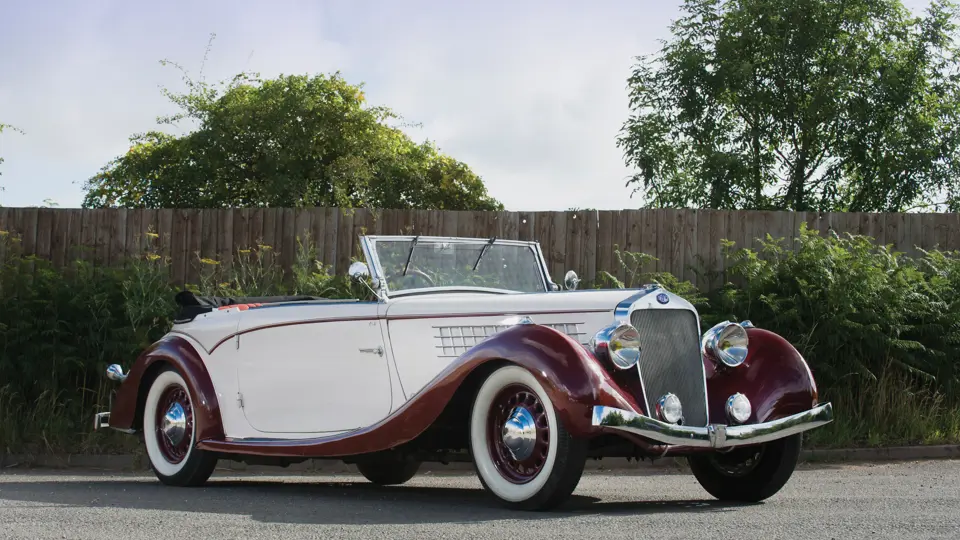
 | London, United Kingdom
| London, United Kingdom
